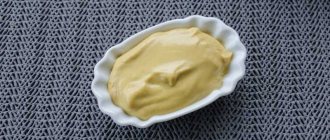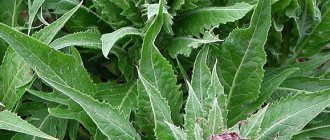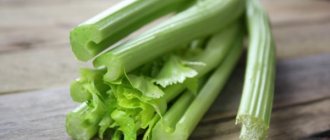Parsley is a plant that can be found in almost every garden. Both the leaves of this plant and its root have beneficial properties. The article will examine in more detail the properties that parsley root has. Its benefits and harm will become known to you after reading it. When used correctly, great results can be achieved.
From the history
Where was parsley root first used, the benefits and harms of which will be discussed in the article? Greece can be considered the birthplace of this plant. The Greeks considered it healing and divine. They were the first to appreciate the beneficial properties of parsley. This plant grew on a rocky area. Initially, they noticed that parsley was growing every year, although no one was planting it or caring for it. It was then that the Greeks decided to check what kind of plant it was. We started using parsley leaves and roots. The benefits and harms of this plant were studied back in those days. It turned out that parsley has many healing properties. It began to be actively used in medicine. Also, parsley root was previously used by shamans to carry out their rituals.
At the same time, the plant began to be called “petroselinon”, which translated means “a plant that grows on a stone.” And later the Slavs began to use parsley everywhere, and gave it the simple name that we are used to hearing today.
Description
Parsley is a perennial plant that has many varieties and varieties. It is also distinguished by the variety of its beneficial properties. The height of some varieties of parsley can reach about a meter, and the largest part is 5 centimeters in diameter. The plant grows vertically, like carrots. The root itself is fleshy and very similar in shape to a carrot fruit. When cut, it has a white or yellowish-white tint.
Parsley root contains a lot of manganese. It is thanks to this mineral that its taste is so specific.
Parsley root: benefits and harm
This root vegetable has a lot of benefits. If a person uses it daily, then good results can be achieved.
Parsley root has the following properties:
- Improves appetite.
- Improves vision.
- Cleanses the walls of blood vessels and the liver.
- Removes salt from the body.
- Increases immunity.
- Copes with gum inflammation.
Despite the fact that parsley has quite a lot of beneficial properties, the vegetable also has a number of contraindications. It is contraindicated for use by women bearing children, especially in the second trimester.
The juice of the plant is contraindicated for people with cystitis and nephritis. Parsley root should also be used with caution in case of diseases of the genitourinary system and in the presence of kidney stones. In this case, you need to consult an experienced doctor.
Parsley may also be contraindicated if you have an individual intolerance to essential oils or other components included in its composition.
The plant should not be used in the following cases:
- When using lithium preparations.
- With oxaluria.
- For epilepsy.
- If there are calcium metabolism disorders in the body.
Growing Parsley Root
It is necessary to grow roots on loose and pre-prepared soil.
The plant grows well in both sun and shade.
Seeds generally need to be sown at the end of April.
For best results, it is recommended to fill them with warm water for 3-4 days. After the sprouts appear, you can proceed to sowing.
The optimal depth is considered to be 1-2 centimeters. Shoots should appear within 2-3 weeks.
This plant is very cold-resistant, so it can be sown even in winter, but in cold soil not covered with snow, the seeds may die.
Taking into account the growth characteristics, seeds should be planted in a permanent place so as not to subject the seedlings to mechanical damage during replanting. All care includes fertilizing, fertilizing and weeding.
If you follow the recommendations, there will be no problems with growing, and you will be very pleased with the harvest.
An important point is that you need to choose varieties of parsley that produce a massive root; ordinary leaf parsley will not be suitable for these purposes.
Parsley root: medicinal properties
The root of this plant contains the following vitamins:
- B. This vitamin is involved in the formation of hemoglobin.
- RR.
- TO.
- C. Parsley contains three times more vitamin C than lemon. To protect yourself from diseases and strengthen your immune system, you need to eat a bunch of greens every day.
- Trace elements treat heart disease. It is worth noting that parsley contains more calcium than dairy products.
What else is parsley root good for? The medicinal properties of this fruit are limitless. Scientists have proven that parsley root is especially useful for people with gynecological diseases and disorders of the genitourinary system.
Parsley root: necessary options
As a medicine, the roots are best understood for their effects on the urinary system. They are used to treat a variety of conditions that benefit from increased urination, including urinary tract infections, cystitis, and edema. Root broth can reduce swelling and reduce weight by removing excess water. The root culture is traditionally used as a liver tonic and as a means to break up kidney stones.
Its taste can be found somewhere between carrots and parsley, and it has an earthy flavor that makes it versatile, cooked or raw. It is also a nutrient reserve with significant potential for overall health. Occasionally, the plant encounters a double rhizome. The tubers have a raw, brittle flavor and a smooth and creamy texture once produced. The plant is very aromatic and is sometimes used as a seasoning. All parts of the plant: root, vegetation and logs are edible.
On a note! In case of serious health problems, before self-administration, you should consult a doctor, since, in addition to the utility, damage caused by consuming parsley root is possible.
Chemical composition of the plant
Parsley is a pungent plant. Thanks to the presence of essential oils, it has a generous sweet taste and a unique aroma. It also surpasses lemons and oranges in terms of vitamin C.
This plant is also rich in folic acid, carotene and vitamins PP, B1 and B2.
Due to its higher content of micro- and macroelements, as well as vitamins, the root of this plant is known for a wide range of healing properties. The word "parsley" comes from the Greek word "Pietro", which means "stone".
In ancient times, it was considered a symbol of pain and its garlands were used as a symbol of pain for a deceased person.
Other properties
In what other cases can parsley roots be used? The beneficial properties of this plant are not known to everyone. Parsley root contains large quantities of chlorophyll, which takes an active part in oxidative processes. There is also folic acid, which is simply necessary for the human body.
What are the benefits of parsley root? Its benefits include the fact that it can improve digestion. Moreover, the desired effect can be achieved almost immediately after using the “medicine”. Even when parsley is in the oral cavity, it begins to have a beneficial effect on many human organs.
How can you use parsley roots? The beneficial properties of this fruit will help overcome many diseases that medicine is powerless to overcome. In order to overcome measles and scarlet fever, you need to drink tea based on this plant. If you regularly consume parsley root, you can restore your blood sugar levels. Due to the apigenin contained in the composition, you can get rid of allergic reactions.
If you have heart problems, then you absolutely need to eat parsley root, as this miracle plant can prevent the development of heart disease.
It can also be used for injuries and wounds. Parsley root is most effective in combating ulcers and inflammation of the mouth. It can also help you get rid of bad breath.
Parsley roots beneficial properties
The beneficial properties of this root vegetable have been known since ancient times: shamans used parsley root in their rituals, and healers recommended taking it to men and women for various disorders of the genitourinary system.
Parsley root has a diuretic, antipyretic, anti-inflammatory, wound-healing, bactericidal, anti-allergenic, carminative, appetite-increasing, digestive and blood purifying effect. In addition, the plant normalizes blood sugar, stimulates the outflow of bile, promotes the dissolution and removal of stones, lowers blood pressure, tones the prostate muscles in men, and regulates menstruation in women.
Storing parsley root
To extract as many beneficial substances as possible, you need to know how to choose the right parsley root. It is also very important to know how to store it. The tastiest and healthiest fruits are medium-sized ones. Also, the fruit must have a white or pale beige tint, and the presence of any damage or bulges on its surface is not allowed. Parsley leaves should be dark green in color.
If you eat greens, you need to eat them within a few days. For a little longer, about two weeks, you can use parsley root. How to store it? It's best in the refrigerator, in the vegetable compartment, next to the carrots. Even better - wrap it in special paper or a bag with holes. But if you have prepared a salad from parsley, you can store it for no more than an hour. Since the vegetable will begin to release nitrates, which are harmful to the body.
You can also store parsley root in the cellar, for no more than six months, at a temperature of 0 to +20 degrees Celsius. But if you choose this storage method, then the vegetable must be placed in a box with sand so that it does not deteriorate and lose its beneficial properties.
Folk recipes based on parsley root
Thanks to its unique composition, the product provides a lasting effect in the treatment of many diseases and cosmetic procedures.
For treatment
For diabetes mellitus, place 10 g of finely chopped roots in a thermos and pour 400 ml of boiling water.
Close tightly and leave for 6 hours, then strain through cheesecloth. Divide this amount into 4 doses per day. Take the infusion for 30 days. For prostatitis and to increase potency in men, take 10 ml of juice squeezed from the root vegetable before breakfast for two weeks.
Take a break for one week and repeat the course. To cleanse the body, grate the pulp from 150 g of root vegetables, steam with ½ liter of boiling water and leave for 15 minutes. Take 4 tbsp. l. in a day. Course – 14 days. After 2 days, repeat the course.
To improve heart function 4 tsp. crushed dry roots, pour 1 cup of boiling water and cook for 15 minutes in a water bath. Strain. Take the decoction 30 minutes before meals, 2 times a day, ¼ cup. Drink the decoction in small sips. Course – 1 month.
For painful menstruation and bleeding, 2 tbsp. l. Pour 2 cups of boiling water over the crushed roots and leave for 4 hours. Strain and take 2 tbsp 30 minutes before meals. l. 4 times a day for 2 weeks.
For cosmetic purposes
Lotion for oily skin : 2 tbsp. l. pour 400 ml of boiling water over chopped parsley roots and place in a water bath for 15 minutes. Remove from heat and leave for 1 hour. Strain. Wipe your face with this infusion morning and evening.
Face mask : for 400 ml of boiling water, take 1 tbsp. l. chopped roots and leaves. Place in a water bath for 20 minutes. Add low-fat cottage cheese to the cooled broth and stir until the consistency of gruel. Apply the mask to the skin for 20 minutes. Apply 2 times a week.
Cosmetic ice relieves facial swelling, bags under the eyes and age spots . Pour the prepared root decoction into ice cube trays and freeze. Wipe your face with the resulting ice cubes in the mornings and evenings.
To restore weak and colored hair, place 2 roots in a container with 2 liters of water. Cook for 20 minutes over low heat. Rinse your hair with the cooled broth after washing. Use for a long time.
Important! Parsley root masks are used immediately after preparation. Juices and decoctions can be stored in the refrigerator for 2-3 days, ice cubes for 1 week.
The benefits and harms of parsley root for men
What else is parsley root known for? The benefits and harms for men have been described a long time ago. Our great-grandfathers also actively used it. This plant is able to cope with male problems. Parsley is effective for any urological pathology. By consuming this plant daily, you can increase your potency and revive your sexual desire. But before sexual intercourse, you should not eat the root in large quantities, as this can lead to hallucinations, and you will definitely not have a pleasant night. Parsley can safely be classified as an aphrodisiac. It is also an indispensable medicine for prostatitis. The plant is also effective for problematic and painful urination.
If you have problems associated with the genitourinary system, then you need to regularly eat 100 grams of parsley, and then your virility will return to normal. Parsley can increase male sexuality, which is very important for any member of the stronger sex. The fact is that the bioactive substances contained in it increase testosterone levels, ensure blood flow to the pelvic area, and prevent cell oxidation.
Men often suffer from hangovers, so parsley can overcome these problems as well.
There were no contraindications specifically for men.
Parsley root in medicine
Where else is parsley root used? The medicinal use of this plant was practiced hundreds of years ago. Parsley root can be used both internally and externally. In general, the plant has many properties, which is why it is widely used in medicine. It is good for digestion, helps with gynecological diseases, and relieves pain.
Parsley is widely used in folk medicine. The juice of the plant is useful in the following cases:
- For painful menstruation.
- For swelling.
- For cystitis.
- For inflammation of the prostate gland.
- For colic.
Parsley also has laxative properties, so it can also be used for constipation. Many women value parsley because it helps them lose extra pounds. There are many diets with the main ingredient - parsley.
Areas of application of parsley root
The aroma of parsley root is almost as intense as the aroma of herbs, and the product lasts much longer. Therefore, you can stock up on roots for the winter. The root is added to food as a spicy seasoning . It is equally tasty raw, dried, pickled and boiled.
The product goes well with any meat, as well as with many vegetables - potatoes, turnips, carrots, cabbage, zucchini.
Grated fresh root is used as an additive to salads. Boiled, stewed, fried roots are prepared as a side dish. Parsley root is an ideal seasoning for canning vegetables. , decoctions, infusions, powders, and juices
are prepared based on parsley roots The juice is used as a medicine to improve the functioning of the adrenal cortex, stimulate the functioning of the brain and thyroid gland. To enhance the effect of the juice, it is mixed with the juice of cucumber, celery, and carrots. Decoctions help well with intestinal problems; they are used as a diuretic and choleretic agent for cystitis, kidney stones, and gastritis with low acidity. In gynecology, decoctions are used to restore the cycle. Infusions are used to cleanse the liver. They also help well in the treatment of prostatitis.
The product also occupies a strong position in cosmetology . Women use it in face mask recipes. Masks moisturize, whiten and tone the skin. Parsley root products reduce acne, are used to remove age spots, and smooth out fine wrinkles around the eyes. They also relieve swelling and have a lifting effect.
It can be useful:
How to properly grow parsley on a windowsill
Features of growing parsley in a greenhouse
Review of the parsley variety “Italian Giant”
Cosmetology
Parsley is also used in this area. How is parsley root useful in cosmetology? Many women suffer from freckles, but thanks to this plant you can get rid of such a defect. To prepare the mask you will need parsley root and lemon juice. The root of the plant can whiten the skin and get rid of age spots. From it you can prepare decoctions that can be used to cover the affected areas of the skin and areas where fungus has formed.
Parsley can also be beneficial for hair. To do this, you need to prepare a mask from the root of the plant and regularly apply it to the skin. Parsley helps prevent hair loss, improve color and appearance. You can also prepare decoctions for hair. But it is worth noting that such a product can cause allergies. To do this, you need to conduct a test by moistening your earlobe.
Parsley root for the winter
In order to have vitamins in the house all year round, you need to take care of this in advance and prepare the vegetable for the winter. To prepare parsley root, it must be extracted from the ground in late autumn. The collected fruits must be shaken off the ground, washed well and left to dry. Then the parsley root needs to be cut into several long strips and put in the oven to dry. It can also be placed near the battery, at a temperature of no more than 35 degrees.
Storing dried parsley is very easy. It can be put in a box or jar and taken, for example, to the balcony. The only condition is that the room be cool and dry.
You can also plant your own parsley. To do this, you need to plant the root of the plant and wait for it to sprout. Parsley will feel good on the windowsill.
It is worth noting that the benefits of the plant can be preserved in frozen form, but not more than one year.
Dried parsley root
You can buy fresh root vegetables all year round, but many try to stock up on them by drying them.
And this decision is very correct, since there are many ways to use dry roots, this seasoning is easy to store, does not take up much space, and the taste of parsley root will decorate any, even the simplest, dish.
How to properly dry parsley root?
Root crops are harvested in the fall.
For proper preparation, they must be washed to remove excess dirt and dust.
Then they are thoroughly dried and cut.
Drying should be done in ovens or special dryers.
Dried parsley root should be stored in jars for no more than two years.
Parsley root in cooking
How can you use parsley root in cooking, the benefits of which are so great? The root itself has a sweetish taste and a pleasant aroma of essential oils. It is especially often used in expensive restaurants when preparing gourmet dishes.
The root of the plant can be prepared in different ways: baked in the oven, steamed, fried in oil and even boiled. Some people eat the vegetable raw. Parsley is used to prepare soups, salads and main courses.
Parsley root is without a doubt a unique product that can be used in different areas. But most of all its benefits have been appreciated in medicine.
Parsley root for weight loss
Parsley root and a properly prepared decoction based on it are used for weight loss; it has a cleansing effect on the entire body: it activates metabolism, removes toxins, salts and excess liquid, cleanses the liver and blood vessels, and reduces appetite.
To lose weight and improve metabolism, the fleshy, aromatic tuber of parsley can be consumed fresh, either on its own (for example, cut into slices) or in combination with your favorite vegetables in a salad. In addition, there are a large number of methods for preparing and schemes for using a decoction for weight loss from parsley roots.
Just remember that this remedy will only work with an integrated approach, namely when combined with proper nutrition and a healthy lifestyle.











